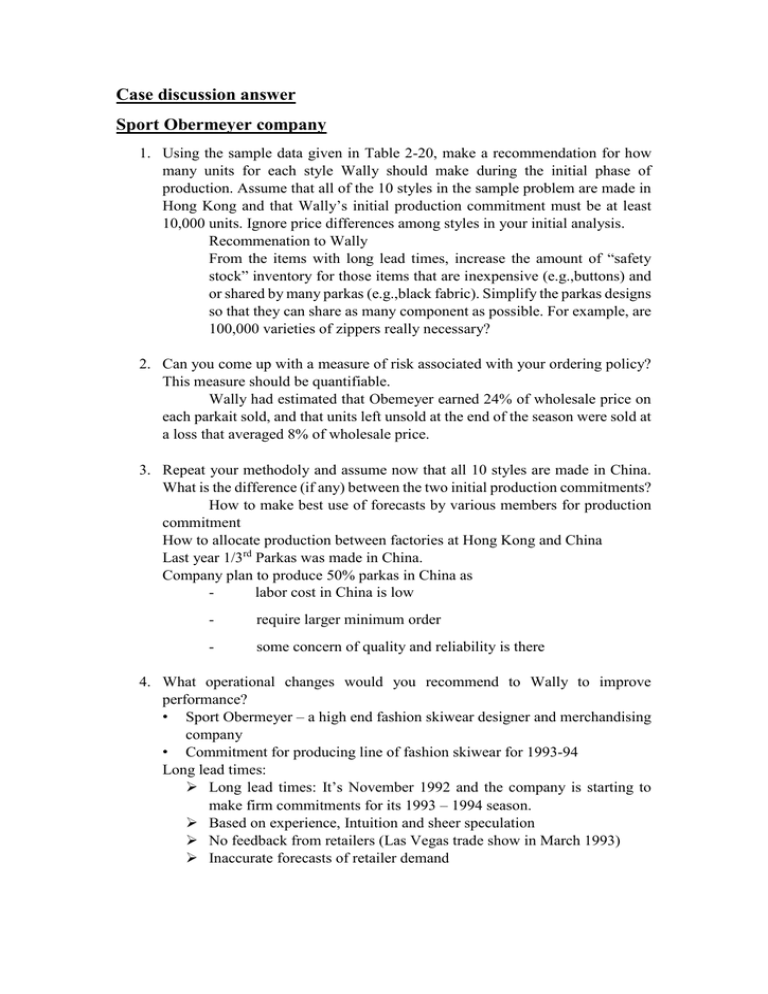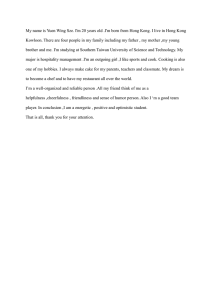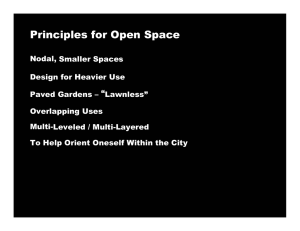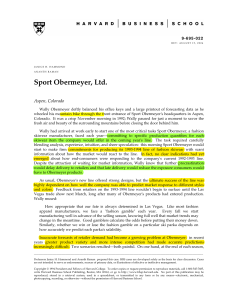Case discussion answer Sport Obermeyer company
advertisement

Case discussion answer Sport Obermeyer company 1. Using the sample data given in Table 2-20, make a recommendation for how many units for each style Wally should make during the initial phase of production. Assume that all of the 10 styles in the sample problem are made in Hong Kong and that Wally’s initial production commitment must be at least 10,000 units. Ignore price differences among styles in your initial analysis. Recommenation to Wally From the items with long lead times, increase the amount of “safety stock” inventory for those items that are inexpensive (e.g.,buttons) and or shared by many parkas (e.g.,black fabric). Simplify the parkas designs so that they can share as many component as possible. For example, are 100,000 varieties of zippers really necessary? 2. Can you come up with a measure of risk associated with your ordering policy? This measure should be quantifiable. Wally had estimated that Obemeyer earned 24% of wholesale price on each parkait sold, and that units left unsold at the end of the season were sold at a loss that averaged 8% of wholesale price. 3. Repeat your methodoly and assume now that all 10 styles are made in China. What is the difference (if any) between the two initial production commitments? How to make best use of forecasts by various members for production commitment How to allocate production between factories at Hong Kong and China Last year 1/3rd Parkas was made in China. Company plan to produce 50% parkas in China as labor cost in China is low - require larger minimum order - some concern of quality and reliability is there 4. What operational changes would you recommend to Wally to improve performance? • Sport Obermeyer – a high end fashion skiwear designer and merchandising company • Commitment for producing line of fashion skiwear for 1993-94 Long lead times: Long lead times: It’s November 1992 and the company is starting to make firm commitments for its 1993 – 1994 season. Based on experience, Intuition and sheer speculation No feedback from retailers (Las Vegas trade show in March 1993) Inaccurate forecasts of retailer demand 5. How should Wally think (both short-term and long-term) about sourcing in Hong Kong versus China? What kind of sourcing policy do you recommend? When sourcing from China, four styles need to be ordered in excess of the average forecast in order to reach minimum production amounts. To determine how many of each style to order in the first round, preference was given to the lower risk items. 80% of the lower risk items should be ordered initially because it is more certain that the amounts forecasted will be accurate. For items with a COV above 0.2 only 20% of the average forecast will be ordered so that Sport Obermeyer can wait until after the Las Vegas show to verify with 80% certainty the success of each style. It is recommended that any high risk item be produced in Hong Kong because they are more flexible, produce higher quality items, and the minimum production requirements for an order is only 600 units versus the 1,200 units required in China. Short-term Operational Changes- The maximum production of 20,000 set by Wally should be increased. For example, because there is a maximum of 21,000 available units for the production period (30,000 production capacity x 7 months), extra quantity of Gail could be produced without having to cut into production of other styles. This would be preferable because sourcing Gail from China would require 813 more units to be produced than what is forecasted to be sold. However the cost savings of producing them in China outweigh the cost of selling the extra at an 8% loss. For our recommendations, Gail was produced in Hong Kong in order to adhere to Wally’s 20,000 maximum production guidelines.






